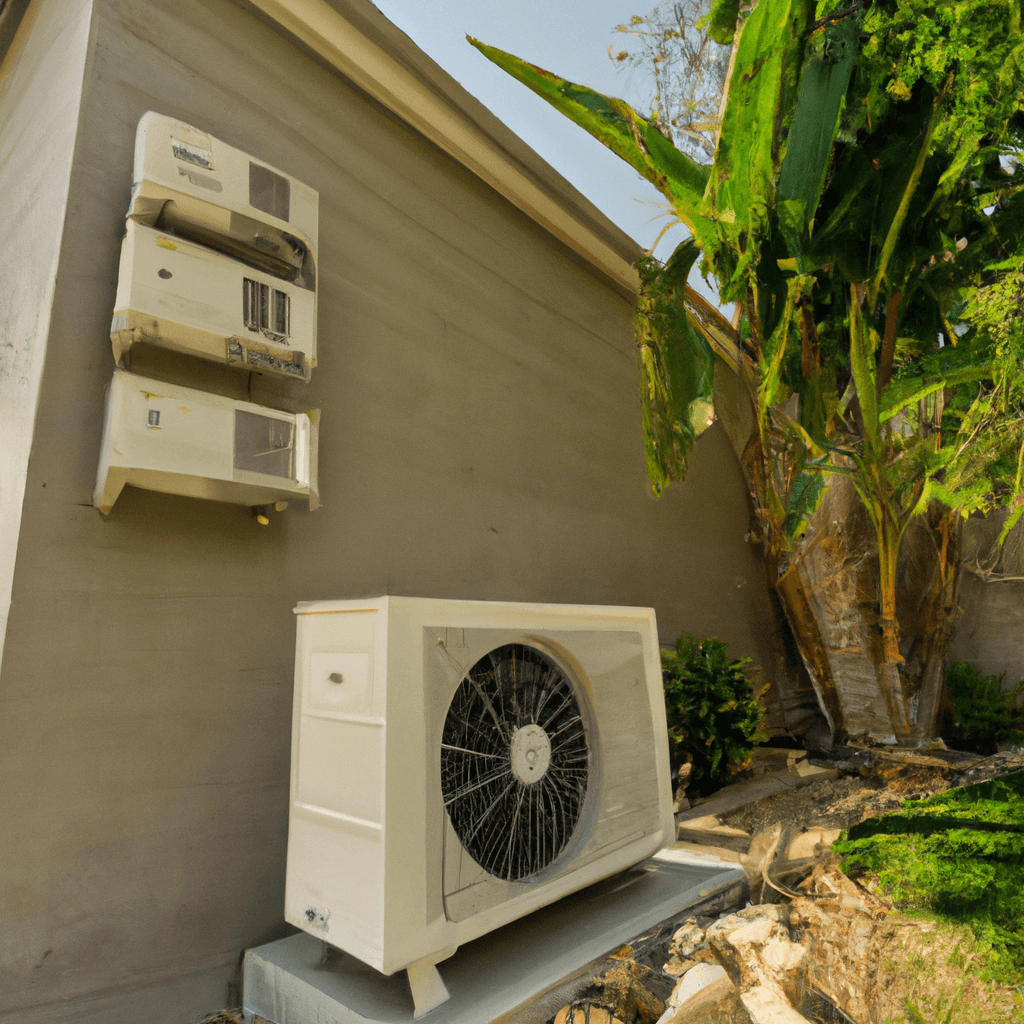Mini Split SEER Rating
Knowing the SEER Rating on mini split systems is important for homeowners who wish to upgrade their current system or install a new one. SEER stands for Seasonal Energy Efficiency Ratio and it indicates the efficiency of the unit—the higher the SEER rating, the greater the efficiency.
When shopping for mini split systems, it’s important to understand what SEER rating you require and the best rated units on the market. In this article, we’ll explain the importance of SEER rating, answer common questions, and look at how you can find the best rated systems.
What is SEER Rating?
SEER rating is a measure of efficiency for air conditioners or heat pumps. It’s a ratio of the total cooling output of an air conditioner over a specific period of time, divided by the energy used during that same period of time. The higher the ratio, the more energy efficient the system is, and the lower the energy consumption.
Seer ratings of 13 or higher are usually considered to be high efficiency. In the United States, split systems must meet the minimum requirements of 13 SEER to qualify for tax incentives.
What to Look For When Choosing a Mini Split System
When shopping for a mini split system, it’s important to consider the built-in features and options that come with it. Many mini split systems come with a variety of features, including temperature sensors, remote control, and even voice commands. In addition to these features, you should also take into account the size of the system, the type of compressor it uses, and the noise level.
The type of compressor used in a mini split system also affects its efficiency. Variable-speed compressors help to regulate the system and reduce energy consumption. Additionally, the higher the SEER rating, the quieter the system will be because a higher rating indicates improved efficiency.
What’s the Best SEER Rating for Mini Splits?
When it comes to mini split systems, the best SEER rating is typically 19 or higher. A higher SEER rating means a more efficient system, which translates to lower energy bills and a longer life for the unit.
It’s important to note that mini split systems with SEER ratings of 14 and above require more maintenance than systems with SEER ratings of 13 or lower. This is because higher SEER systems are more efficient, so they require more cleaning and maintenance to keep them running at peak efficiency.
Long-Term Benefits of Higher SEER Rated Units
Investing in a mini split system with a high SEER rating can pay dividends over the long term. High SEER rated units are more efficient, so they use less energy, resulting in lower energy bills. In addition, these systems require less maintenance and provide better overall performance.
Finally, installing a high SEER rated mini split system can add to the value of the home, making it more attractive to potential buyers should the homeowner decide to sell.
Tips for Installing High SEER Rated Mini Split Systems
When planning to install a mini split system with a high SEER rating, it’s important to consider the location and size of the unit. Mini split systems are usually installed in the living and bedrooms, but they can also be installed in other areas, such as garages and basements.
In addition to picking the right location, it’s important to make sure the unit is the right size for the space. For example, a one-zone system might be ideal for a small bedroom, but too large for a walk-in closet. It’s best to consult with a certified HVAC contractor to get the best advice on selecting and installing a mini split system with a high SEER rating.
Installing a mini split system with a high SEER rating can help save money on energy bills and increase the value of the home. Knowing the SEER rating and picking the right system for the space can also help to ensure peak performance in the long run.
For assistance with selecting and installing a mini split system with a high SEER rating, call Local Reliable Appliance Repair at (866) 311-8590. They specialize in HVAC repair and installation, so you can be sure that your mini split system will be properly installed.



Avoiding SEER Rating Issues
If you have an air conditioner or system that requires maintenance or updating, there are several steps you can take to help avoid any issues with your SEER Rating. Below are manufacturer recommendations as well as suggestions from local appliance companies and HVAC technicians that can be used to minimize any problems.
Manufacturer Recommendations
- Ensure any units you are installing are rated according to the energy efficiency standards of your region.
- Install energy-efficient components, such as ECM / DC motors and high-efficiency SEER fans, to improve overall efficiency and performance.
- Be sure to use the proper refrigerant charge, as an incorrect charge can affect the system’s SEER rating.
- Keep all components, including coils and condenser fans, clean to maximize cooling and efficiency.
- Install vibration isolation to reduce compressor and motor noise.
- Have a qualified technician verify that the sizing of the system is in accordance with the manufacturer’s guidelines and will support the correct SEER rating.
Local Appliance Companies’ Recommendations
- Utilize a local HVAC dealer/contractor/installer who is familiar with the SEER ratings of the equipment they are installing and servicing.
- Make sure they have a good track record, customer service reviews, and any available licenses or certifications.
- Use premium-grade components, such as high-efficiency compressors, variable-speed indoor blowers, and variable-speed outdoor fans for improved efficiency and performance.
- Ensure proper calibration of the installed equipment.
- Utilize an appropriate, efficient refrigerant when installing the system.
HVAC Technician Recommendations
- Utilize proper training and experience when evaluating, installing, or servicing a system with an associated SEER rating.
- Utilize appropriate tools such as vacuum/pressure gauges, thermometers, and infrared thermometers to evaluate a system’s overall performance.
- Perform periodic maintenance on the system, including filter changes, coil cleaning, and other necessary adjustments.
- Inspect the system for any possible obstructions in the airflow, such as dust and debris.
- Use proper insulation and weather-stripping when installing a new system.
Taking these recommendations into account can help you avoid any issues with your SEER rating. Whether you are performing necessary updates or installing a new system, these tips can help ensure your system is operating at optimal efficiency and performance. For expert advice and support, consider utilizing a certified HVAC technician. They can help you determine the best steps for your specific situation, as well as ensure your system is properly configured for the utmost efficiency.
Average Repair Cost for SEER Rating Issue
The minimum repair or installation cost of a SEER rating issue is 20% higher than usual. For California, the complex repair or installation cost may vary depending on the extent of the damage. Possible repair parts that may be necessary include filters, motors, compressors, fans coils, condensers, and heat pumps.
The repair cost will depend on the parts that need to be replaced and their cost. The cost of labor and materials should also be taken into account; while some materials can be inexpensive, some may be expensive.
For the best professional advice on repairing or installing SEER rating issues, it’s recommended that you contact Local Reliable Air Conditioning & Heating at (866) 311-8590. They can provide you with a detailed estimate of the repair or installation cost and advise you on the parts needed and their prices. Don’t attempt a repair or installation job yourself and save time and money by getting it done right the first time around.
High Efficiency with SEER Rating
SEER Rating is a metric used to measure the efficiency of heating, ventilation, and air conditioning (HVAC) systems. It stands for Seasonal Energy Efficiency Ratio and considers both cooling and heating efficiency over a season. California Reliable Air Conditioning & Heating is a family-owned local business with the expertise, training and resources to ensure that you get high-efficiency air conditioning systems suited to your needs.
Reliable Air Conditioning & Heating has 5+ years of technical experience and provides same-day service for all repair and install needs. The company is an accredited, licensed and insured business, offering fair and competitive pricing. With Reliable Air Conditioning & Heating, you can rest assured that your HVAC system is installed correctly and operated efficiently.
Reliable Air Conditioning & Heating are experts in SEER Rating, so you can trust that they will accurately assess your home’s air conditioning needs. They will provide you with the best HVAC system that is tailored to your home’s needs and that maximizes energy efficiency. What’s more, the company provides a 90-day warranty on all repairs and installations.
For maximum energy efficiency, look no further than Reliable Air Conditioning & Heating. With years of experience in HVAC services and expertise in SEER Rating, this family-owned business provides same-day service, competitive prices, and a 90-day warranty on all repairs and installations. Enjoy confident, reliable air conditioning and heating with Reliable Air Conditioning & Heating today.
FAQ: Mini Split SEER Rating & SEER Rating
What Is a SEER Rating?
A SEER (Seasonal Energy Efficiency Ratio) rating is used to measure the efficiency of air conditioning systems. It is calculated by the ratio of cooling output of an air conditioner during a typical cooling season divided by the total energy consumed by the system in watt-hours during the same period.
What’s the Difference Between SEER and EER Ratings?
SEER (Seasonal Energy Efficiency Ratio) ratings measure the efficiency of a cooling unit over an entire cooling season, while EER (Energy Efficiency Ratio) measures the unit’s efficiency at a single outside temperature.
What’s the Difference Between SEER and Mini Split SEER Ratings?
SEER Ratings measure the efficiency of a whole air conditioning system, while mini split SEER ratings measure the efficiency of just the indoor unit. Generally, mini split SEER ratings are higher than SEER ratings because only the efficiency of the indoor unit is being calculated.
What Is a Good SEER Rating?
The higher the SEER rating, the more efficient the system will be. The minimum SEER rating for split systems is 14, but 16-21 SEER systems are the most common for residential applications.
Is a High SEER Rating Always Preferred?
Not necessarily. Even though higher SEER ratings indicate more efficiency, higher ratings can also mean more upfront costs. Therefore, it is important to consider the cost-efficiency and balance of the unit before making a decision.
Where Can I Learn More?
For more information about SEER ratings, Mini Split SEER ratings, or a reliable appliance repair service, please call Local Reliable Appliance Repair at (866) 311-8590.

